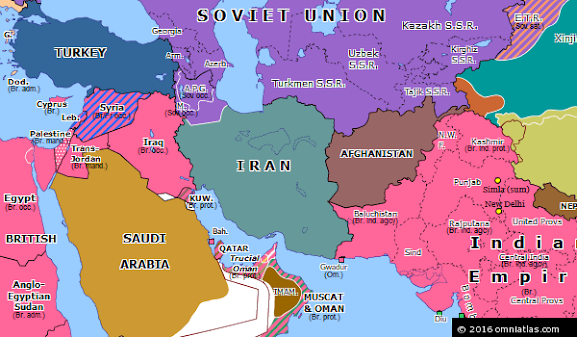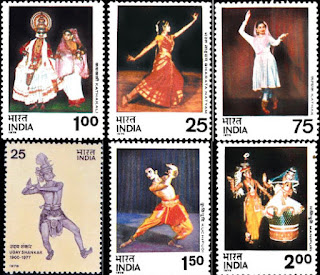

WRITTEN BY LONDON SWAMINATHAN
Post No. 10,615
Date uploaded in London – – 31 JANUARY 2022
Contact – swami_48@yahoo.com
Pictures are taken from various sources for spreading knowledge.
this is a non- commercial blog. Thanks for your great pictures.
tamilandvedas.com, swamiindology.blogspot.com
Is Iran, Saka Dwipa? Interesting Information about Sapta Parni and Zoroastrian Cypress (Post.10,615)
Where is Saka Dwipa? Is it Seistan, now part of Iran and Afghanistan? How come the 900 BCE Assyrian Sacred Tree looks like Saptaparni/Seven Leaves Tree? Is there a similarity in Buddha’s Bodhi Tree and Zarathustra’s Cypress Tree? Why did Kalidasa’s books give importance to Sapta parni?
Let us find answers to these questions.
Mahabharata mentions a mighty Saka Tree in Saka Dwipa. Hindus divided the world into seven Dwipas,i.e seven regions surrounded by or divided by seas. They are Jambudwipa, Kusadwipa, Salmali Dwipa, Pushkaradwipa, Sakadwipa, Kraunchdwipa and Plaksha dwipa. Except Jambudwipa (India), all the locations are debatable.
Bhishma Parva (11-28) of Mahabharata says,
People of Saka dwipa adore the Saka tree and they worship Lord Shiva. Saka Dwipa is surrounded by sea. Though different types of trees are worshipped by all cultures, we don’t see any Shiva worship in Iran. When Zarathushtra/ Zoroaster founded the Parsi religion (Persia=Iran) he inculcated the Fire worship. Later the Magi or Magha priests introduced Sun and Mithra worship.


Cypress Tree
Like the Peepal or Bodhi tree became popular after Buddha’s enlightenment under it, Cypress tree also veneered by the Parsis because Zoroaster planted a Cypress tree. Now the tree in Yazd province of Iran is a cultural centre and a tourist attraction. Shah nama, a later work, refers to sacred cypress in Kashmir. A branch from the original tree in Iran was planted in Kashmir. We see such stories in Buddhism as well; Asoka sent the branches of Bodhi tree to Sri Lanka. Now the Cypress Tree in Iran is believed to be 4000 to 5000 years old. But Zoroastrian religion is not that ancient.
Seistan is an area in the border of Afghanistan and Iran. It is shared between the two countries. The ancient name of Seistan is Saka stana. Though it confirms one area of Iran was Saka stan at one time, one may not tell the date. Ancient peoples, groups moved slowly from one area to another. So, no one can pinpoint that this is the original Saka Sthana.

Sapta Parna or Alstonia scholaris is found in India. It is referred to in Sangam Tamil literature and earlier Kalidasa’s works. Nobel laureate Rabindranath Tagore founded the Visvabharati University where the graduates were given Saptaparni branches during convocation.
Sakuntala (Act 1-26) of Kalidasa refers to Sapta Parna (Seven Leaves) tree in Kanva Maharishi Ashram. A platform with raised seat was constructed round the tree. That means it is a sacred tree. In his Raghuvamsa Kavya he mentioned Sapta Parna in the 4th and 5th chapters. He says that the flowers of the Saptaparna Tree smelt like the rut of elephants. Immediately the elephants in Raghu’s army also were in rut.
In Sangam Tamil work Paripatal, we see it in the sacred mountain of Lord Muruga/Skanda in Tirupparankundram in Tamil Nadu.
The interesting thing about the Seven Leaf tree is we find such sacred Trees in Nimrud in Iraq around 900 BCE. Though we see some people worshipping it, literary details are lacking but the trees show seven leaves.
Vedic hymns refer to Red trees with Soma juice and 15 types of Soma juice. I guess that several plants were used for Soma juice or similar elixir. Even the Parsis use different plant as Soma in their ceremonies. In the Iraq sculptures we see plants similar to Soma filters in Indus valley seals. Saptaparni figures belong to 900 BCE.
Trees with seven leaves are found in other parts of the world too. Casava leaves are also in a bunch of seven. But we don’t find them sacred. Here the Nimrud sculpture can easily be compared with Sapta Parna of India. Both are projected as sacred trees.
Tree Worship


Tree worship is as ancient as Vedic or Indus Valley culture. Buddha chose an Asvatta Tree for meditation because it was considered sacred even before Buddha. We see Pippaladan (Mr Asvatta Tree) in the Upanishads. We see Ficus leaves in Indus seals too.
Vishnu Sahasranama Hymn named all the three Ficus Tree species as Vishnu’s names. Amazing thing about the three trees is botanically all belonged to Ficus species (Ficus Religiosa= Asvatta/peepal; Ficus Indica= Nyagrodha or Banyan tree and Ficus Udumbara- Udhumbara)
Rig Veda refers to the mighty Banyan Tree as Maha Vriksha. Throughout Tamil Sangam literature, Banyan (Vata Vrksha) is praised as a tree where god resides. Hindu god Dkashinamurthy sitting under the tree in meditative posture, is found in all South Indian Temples.
Kalidasa’s Meghaduta Kavya also talks about Trees surrounded by raised platforms. This shows that sacred trees are worshipped from Kanyakumari to Kashmir. ( In my earlier posts I Have given the details. Please see the links)

–subham–
TAGS– Saptaparni, Zoroastrian, Cypress, Seven leaves, Saka Dwipa, Seistan, Saka
ALSO READ
tree worship | Tamil and Vedashttps://tamilandvedas.com › tag › tree-worship12 Nov 2017 — Three important trees of Ficus genus (Plant Family: Moraceae) are considered holy by the Hindus. Of the three, the most important one was Ficus …
MORE ABOUT TREE WORSHIP IN ANCIENT INDIA (Post No …https://tamilandvedas.com › 2017/11/12 › more-about-t…12 Nov 2017 — 11 Jun 2017 – 18 Mar 2013 – Reand and enjoy this article about “Banyan Tree” from Mr. Santhanam Swaminathan. Tamarind Tree | Tamil and Vedas. – …
- Banyan tree | Tamil and Vedashttps://tamilandvedas.com › tag › banyan-tree26 May 2012 — Posts about Banyan tree written by Tamil and Vedas. … There is a beautiful verse in the Panchatantra about Banyan Tree:.
HINDU TREE WONDERS (Post No.6082) – Swami’s Indology …https://swamiindology.blogspot.com › 2019/02 › hindu…16 Feb 2019 — Posts about famous trees written by Tamil and Vedas. … Banyan Tree worship and Pipal Tree worship are very popular in North India.
Palmyra | Tamil and Vedashttps://tamilandvedas.com › tag › palmyraNewspapers around the world have flashed the news of destruction of the temple of Baal Shamin in Palmyra, Syria. Those who read about the attributes to Baal …
Palmyra mystery | Tamil and Vedashttps://tamilandvedas.com › tag › palmyra-mystery23 Sept 2014 — Rare branched palmyra trees in Batticaloa in Sri Lanka. Research paper written by London Swaminathan Post No 1306; Dated 23rd September 2014 …
neem tree | Tamil and Vedashttps://tamilandvedas.com › tag › neem-tree4 Feb 2020 — Posts about neem tree written by Tamil and Vedas. … There is an interesting anecdote about neem trees. A newly married wife was worried as …
Significance of Neem Tree in Hinduism (Post No.3992) – Tamil …https://tamilandvedas.com › 2017/06/11 › significance-…11 Jun 2017 — Some interesting stories about Neem trees (Margosa tree, Veppa Maram in Tamil) were … Banyan Tree and Sanatkumaras | Tamil and Vedas.





















